I Took A River Cruise Through The South Of France. Yes, Really.
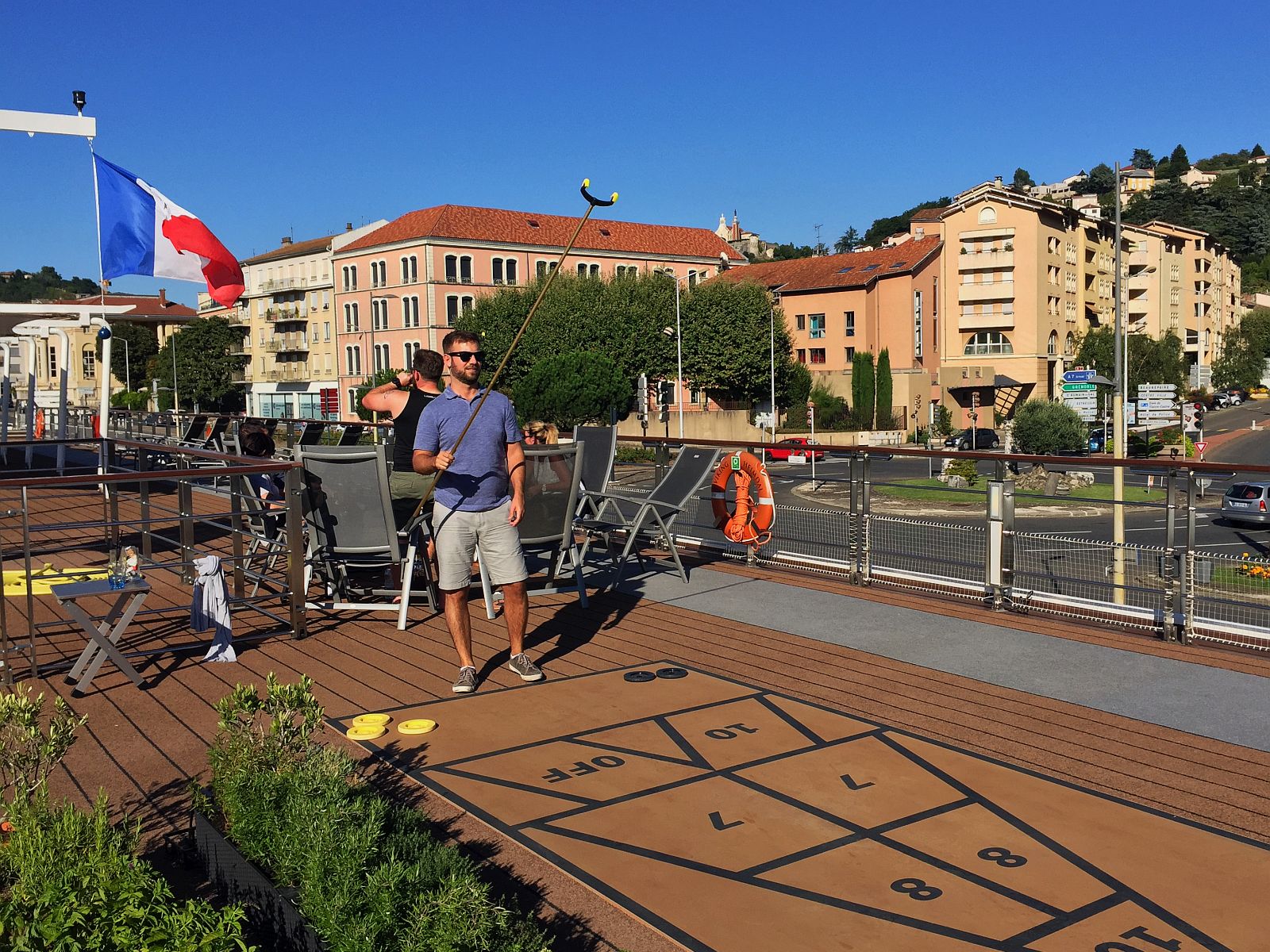
As I sat in the lounge of our longship nursing a freshly poured glass of wine, I looked around the room. Of the roughly 150 or so people attentively listening to the Entertainment Director’s welcome introduction (one of eight such all-hands-on-deck speeches we would hear over the next eight days), I found I could group the passengers into one of three distinct groups — except me, clearly the odd man out.
Roughly seventy percent of the boat were those one could refer to as Seniors: retirees, couples who were still working but whose children were in the reproductive stages of their lives, a surprisingly large number of widows traveling in bunches of three to four.
This particular cruise was earmarked for a gay and lesbian-themed group booking, which made up about twenty percent, and who I was to later learn easily made up the majority of individuals that had purchased so-called “Silver Packages,” which meant unlimited drinks and access to the top shelf-level bottles without incurring additional charges to their bill.
The third group, maybe eight percent, were well-heeled couples, mostly from Europe, that out-dressed us all come dinner time.
Then there was me. Actually, then there was me and one group of three Coloradans that — when combined with myself — made up the population of the boat born after the Carter Administration (okay, technically Carter served less than a year after I was born, but I’m rounding up here). We made up the final two percent, and our common thread was that we all enjoyed day drinking-friendly games (shuffleboard, Yahtzee, Scrabble) and day-drinking itself.
We, collectively, would be spending the next eight days cruising the Rhône River with Viking Cruises, beginning from the river’s mouth where it feeds into the Mediterranean up to Lyon, about 200 miles in total. Copious amount of wine and French cooking would be consumed, river locks would be admired in groups, and about 2,000 years of history would be condensed into daily excursions to some of the most picturesque, admired and most visited cities and villages of France, all under the Provençal sun in August. I’m not sure it gets much better than that.
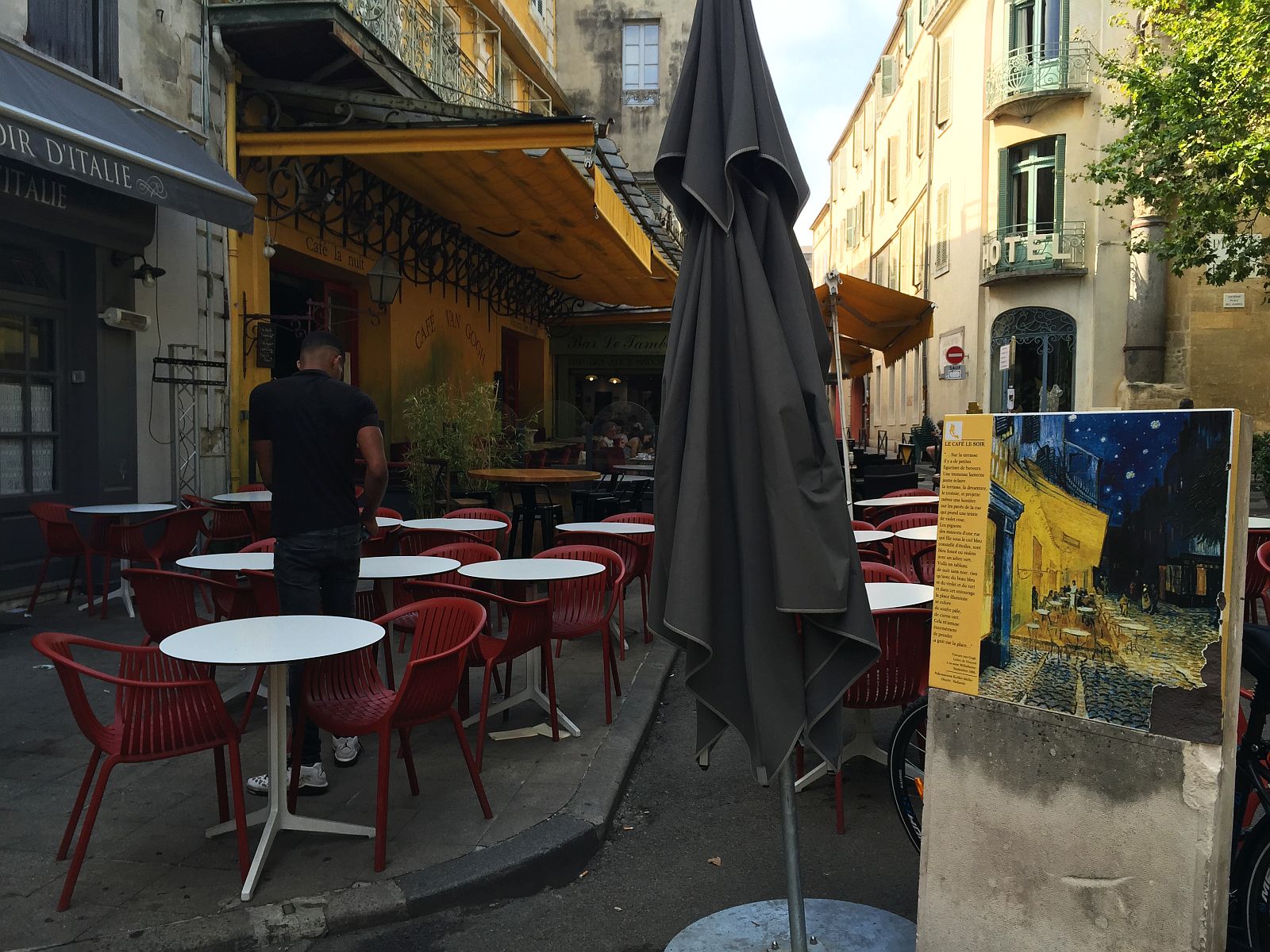
Earlier in the year, I was invited by Viking Cruises — one of the largest and best-known cruise companies in the world with 64 boats floating around the world — to take a cruise with them, and I jumped at the chance to take their Lyon and Provence eight-day river cruise, which includes port-of-call stops in Arles, Avignon, Viviers, Tournon and Lyon. This also included daily excursions to nearby vineyards, medieval villages, goat farms, chateau-turned-wineries and horse farms.
The first day began with a drive through endless fields of sunflowers to Arles, where we were to explore the many Roman ruins that are amazingly preserved in the center of town, including Les Arène, built by the Romans in the early 2nd century AD and that could hold 20,000 spectators during its heyday, as well as the Théâtre Antique, an outdoor theater from the 1st century BC.
Arles, of course, is probably most famous for not what it is but who called it home for a little over a year: one Vincent Van Gogh. And at mid-morning, we found ourselves in the courtyard of the hospital where Van Gogh was admitted after cutting off his ear. The motivation was unclear, history just tells us his favorite prostitute was given it as a gift. In fact, unknown to me at the time, but Arles is home to sites that were the subject of some of his most famous paintings. As any college Freshman who recently decorated their dorm could probably tell you, these include Café Terrace at Night, Bedroom in Arles, and Starry Night over the Rhône.
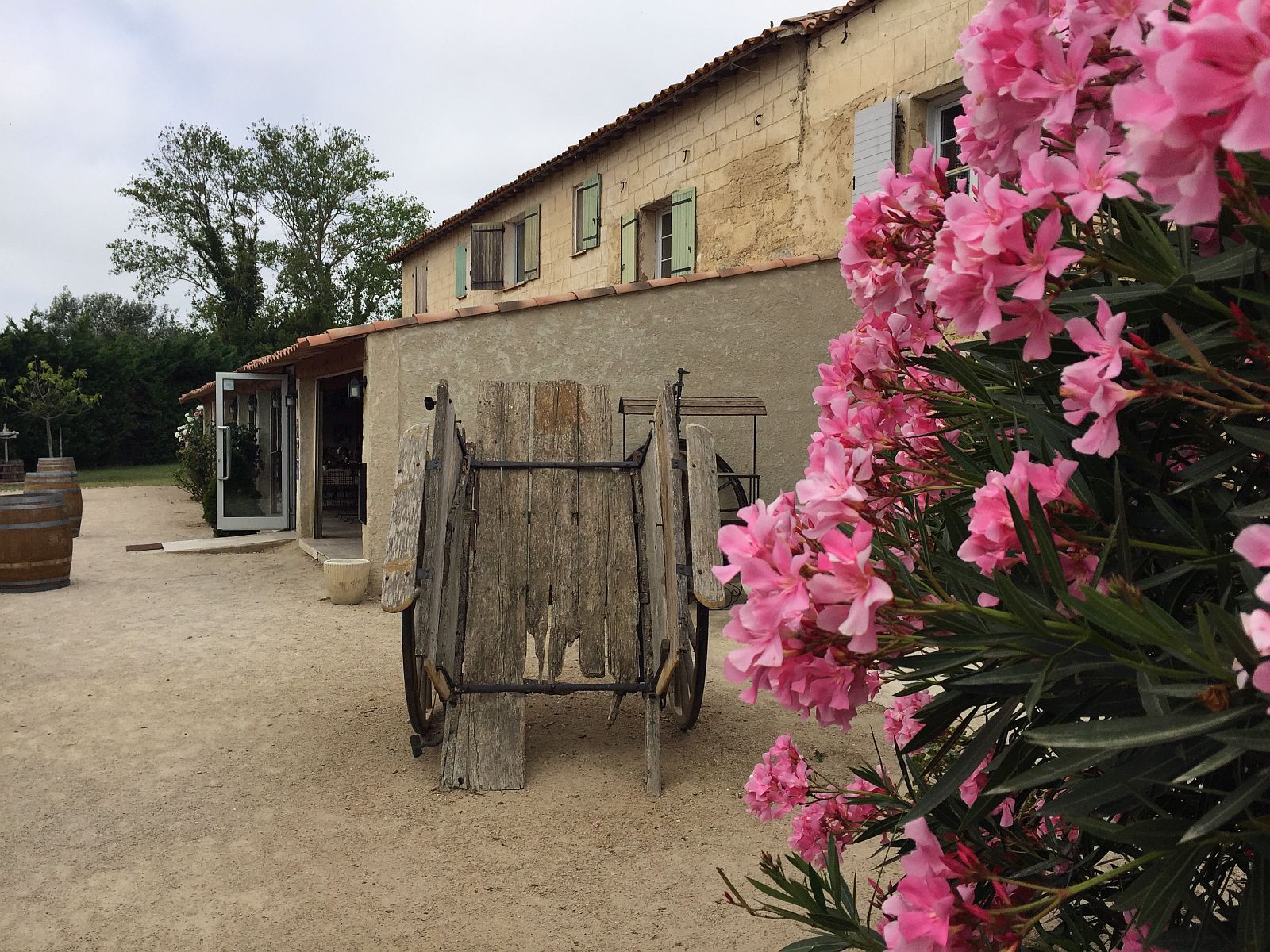
Afterward, we drove south about an hour to the Camargue, France’s protected Rhône River Delta region, home to centuries-old horse and cattle farms, weekend beach villages and about 500 species of birds. Think the Mississippi Delta region, but instead of Hurricanes there is wine, and instead of alligators there are cows.
We stopped for lunch and cow-viewing (yes, really) at La Manade Des Baumelles, a working horse and cattle farm where we followed our gut-busting meal of charcuterie and roasted chicken with a tractor tour of the grounds. We were shown the iconic white-haired Camargue horse that has called this area home for centuries, as well as a lugubrious group of black, long-horned Camargue bulls (one of two breeds used for fighting in Europe) that were content in resting under the warm sun while we drove by taking pictures. Oh to be a breeding bull raised in the South of France — what a way to spend your life!
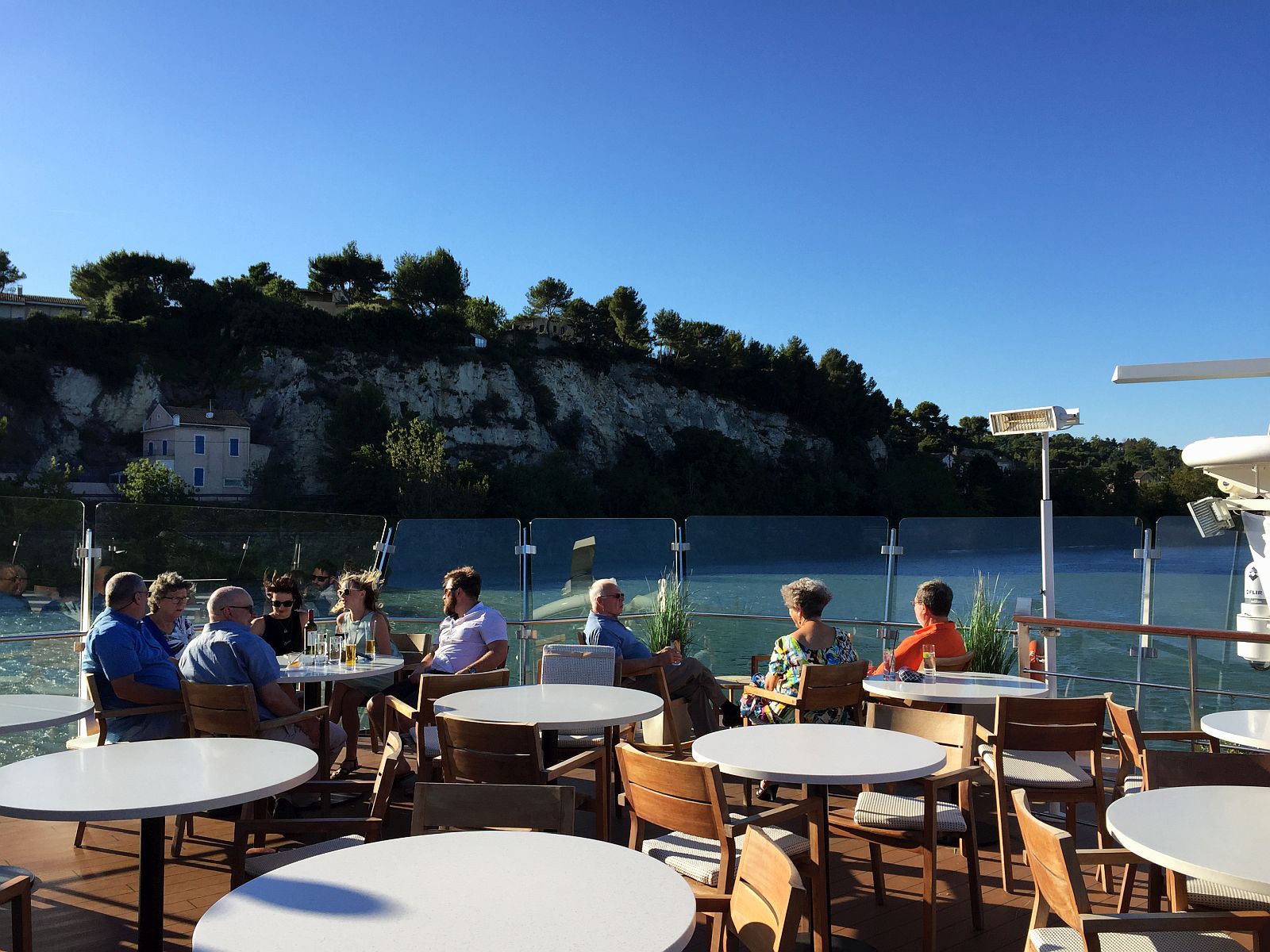
I can’t say I’m much of a cruise traveler. So what was it like spending eight days on one? In all honesty, I’ve got to say, it wasn’t bad. Wasn’t bad at all. Life on a river cruise tended to be a bit more regimented than I was used to during civilian life back on land. On the boat, as is custom on cruise ships, each morning a detailed itinerary was slipped beneath my cabin door (the Viking Daily), assumedly by the friendly Hungarian woman who somehow remembered my name from the moment I introduced myself. (One day I casually mentioned to her that the rules of Shuffleboard were a bit fuzzy to me, and a printout of regulation shuffleboard rules were delivered to me the next morning along with my Viking Daily.)
Breakfast would be served for about two-and-a-half hours, followed by the hustle and bustle on par with morning rush hour. At this time everyone would check back into their cabins and collect their sunglasses, wide-brimmed hats, cameras, day bags and complimentary Viking-branded water bottles and congregate outside to be grouped into one of eight or so guided tour groups. The tours would usually wrap up a few hours later, followed by another leisurely meal either inside where you could have a sit-down lunch, or at the cafe where you could take your meal outside to the deck and watch the waters of the Rhône peacefully glide by.
Following lunch, people usually grouped themselves into one of two camps: the nap in the air-conditioned lounge with a cocktail by their side camp, and the head back out into the world and take part in learning about French history and culture camp, the latter of which meant you were taking part in one of the many daily scheduled excursions for the day.
Perhaps underestimating my need for a daily afternoon nap during a weeklong stretch where the words “seconds” and “dessert” were used more than the entirety of the rest of the year, I signed up for every single afternoon excursion offered, which is how I found myself one afternoon in Avignon as part of a group walking the Passage de l’Oratoire and Rue Saint-Agricol, taking tiny shots of locally produced olive oils and downing macaroons from local shops.
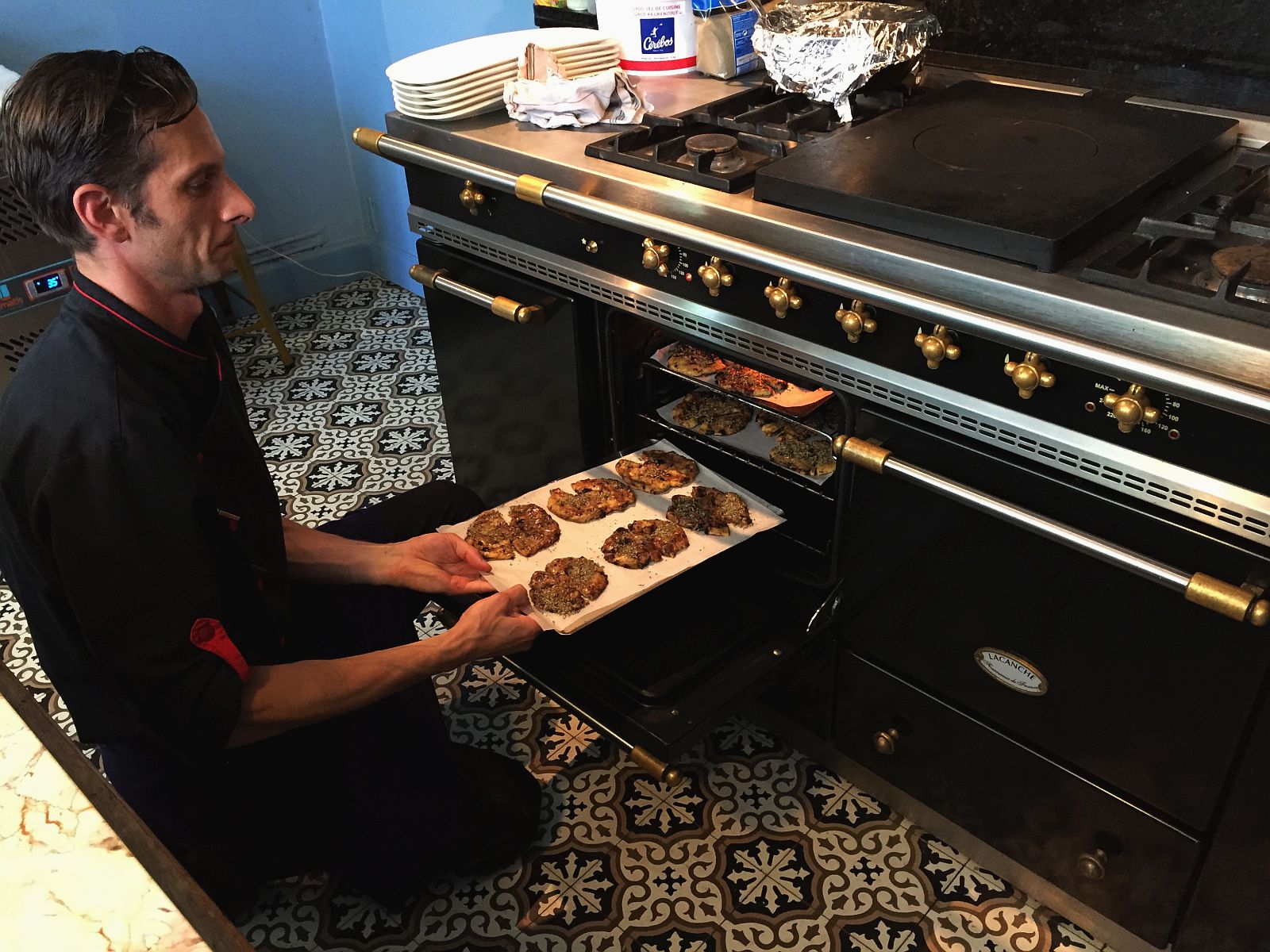
Our small group consisted of two women whose husbands were back at the boat (they were part of the nap camp), and a couple from New Jersey who easily spent in Euros at the macaroon shop what I had allotted as my daily budget. What we were really excited about that afternoon was the fact that we were scheduled to take a cooking class by a local chef at La Maison de Fogasses, a one-time mansion dating back to the 12th Century. The building, owned by Avignon local Corinne Guyon, was recently converted by her into a long-stay artists colony complete with a pétanque court and a popular cafe in its backyard.
After we arrived, we were led out back for a quick glass of wine — we were about to handle cutlery of course — then ushered upstairs to the kitchen of Chef Anthony Rossi who had us in short time kneading dough and brushing liberal amounts of butter on what would be our own prepared batch of the classic pastry Fougasse, complete with traditional Herbes de Provence (a mixture of Rosemary, Thyme and Oregano).
This was followed by a lunch of Fish Provençal (thankfully not prepared by us), wild rice and more wine (notice a pattern here?), all of which I scarfed down in a so-very-not-French way. But I had good reason: I had to make my way back to the quay to catch the bus for the other afternoon excursion: Châteauneuf-du-Pape.
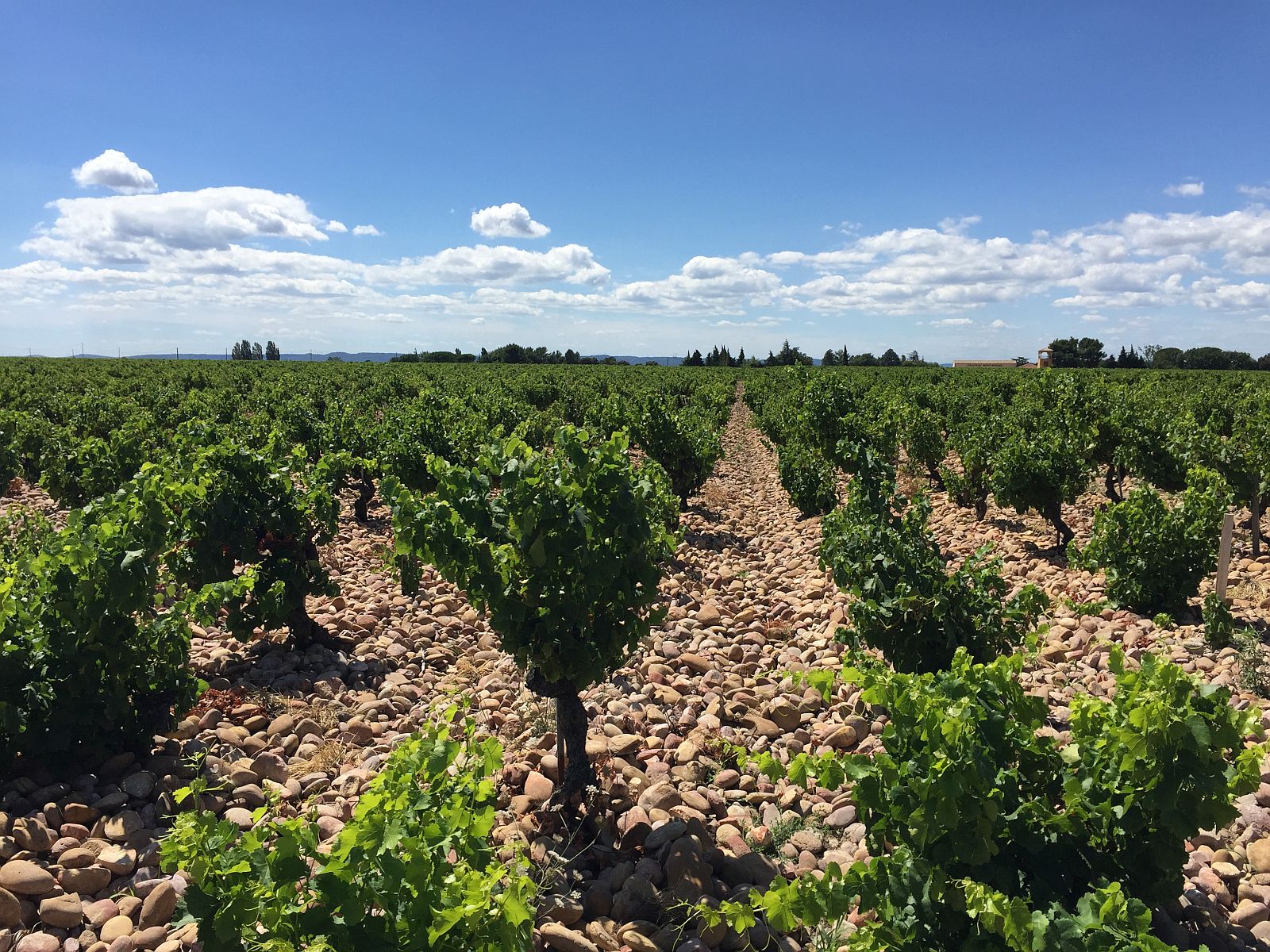
Châteauneuf-du-Pape is famous as home to the medieval castle built as a summer home by Pope John XXII and of course for its wineries. Our bus pulled up to the grounds of the Domaine Bosquet des Papes vineyards, and the unique terrain quickly became apparent. Since this area is essentially an ancient river valley, the short, stubby vines were growing out of a sea of galets roulés, or round rocks, that had once been at the bottom of the river and were now covering the thick clay soil where the roots dig deep in search of water. The rocks are famous for regulating the temperature of the ground — blocking the sun during the day, then slowly releasing it over the night hours — which causes the mostly Grenache, Syrah and Mourvèdre grapes to ripen quicker than normal.
This was followed by a wine tasting and much-needed instruction at the winery Maison Bouachon, where I will forever be remembered as the person at the table who helped ensure his neighbors’ glasses were fully emptied before each new tasting through his own heroic consumption. I think we then saw what appeared to be some sort of medieval festival taking place back in town — I remember people in chain mail wielding swords and lots of cured meat being sold on the street — but this part of the afternoon starts to become fuzzy in my memory (see: wine tasting with groups of age 70+ women).
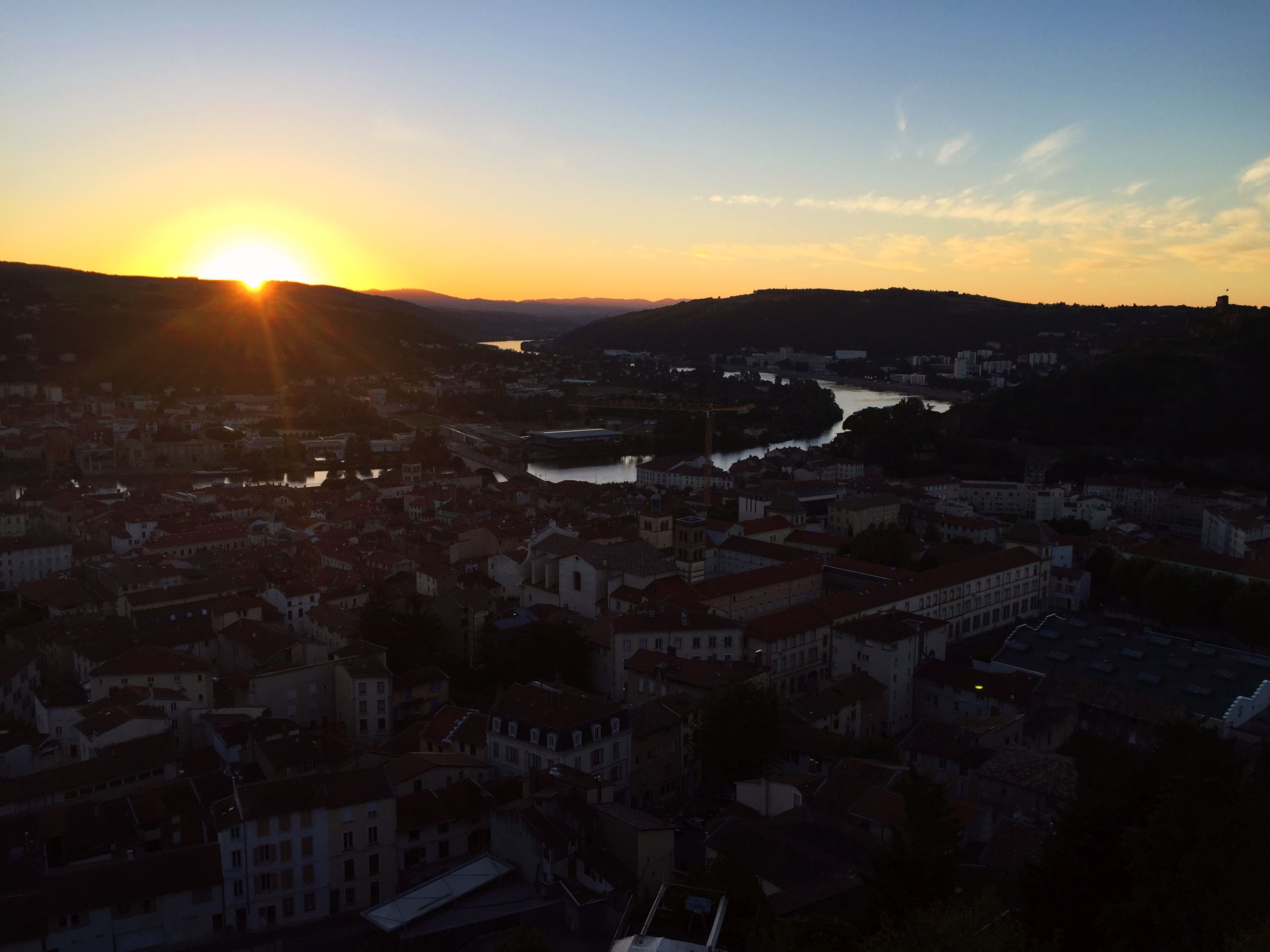
Not to stress this too much, but tours are not exactly my thing. However, the quality of the guides partnered with Viking at each stop were easily the highlight of the trip. Oh to come back to life as a summer tour guide in the South of France — they’re really giving the black bulls a run for their money on my list of humans and/or people I want to come back as in my next life.
Yes, I felt a little goofy carrying around the wireless headsets the guides has us use — this coming from a traveler that perhaps too proudly avoids all variations of guided tours — but the number of facts, enthusiasm in which to share those facts, and the patience to repeat said facts to each person who suddenly was having trouble operating the headset (this seemed to happen to a member of the group about every 10 minutes) was an indelible addition to the trip.
This perhaps was best exemplified by our guide at Vienne. Once a major Roman colony founded by Julius Caesar in 47 B.C., this small city about 20 miles south of Lyon is home to some of the best preserved relics and sights left over from the Roman period. Our first stop was to the Musée gallo-romain de Saint-Romain-en-Gal, a modern structure situated on the western slope of the Rhône, home to an impressive collection of Roman artifacts, including frescoes that adorned the foyers of large mansions, to kitchenware and furniture that had been buried for over 2,000 years.
Outside the museum is a preserved excavation site that features the foundations of the many mansions that called this river plain home. From our elevated vantage point at the museum, our guide dryly pointed out that a school was supposed to have been built there, but the inconvenience of finding an invaluable archaeological site forced city planners to relocate the new school’s location further up the road.
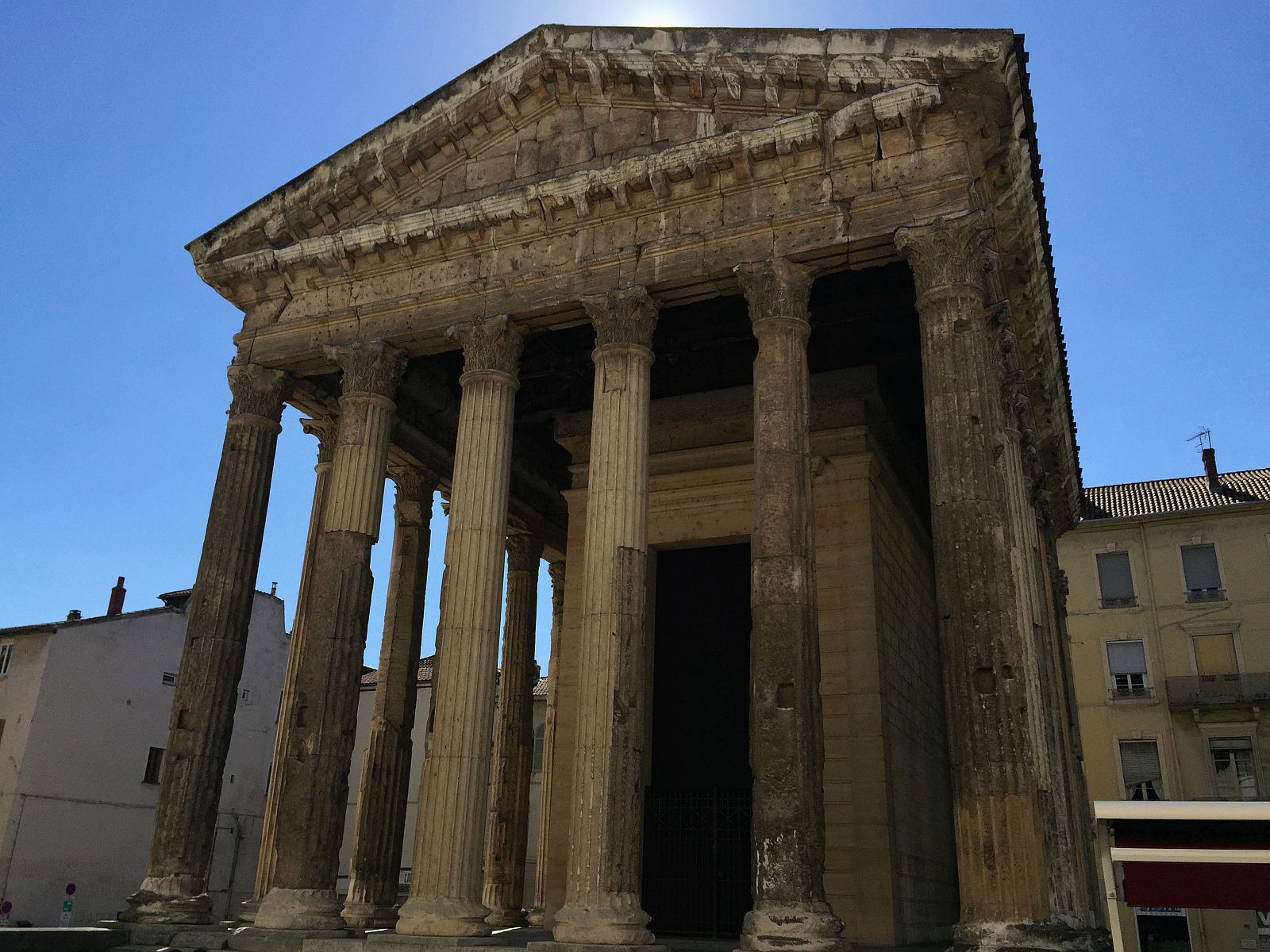
We then traveled into town where the highlight of Vienne is revealed suddenly as you emerge from one of the many narrow streets leading to its center. Here, surrounded by mid-century apartment buildings and a number of cafes dotted across the open plaza, is the Temple of Augustus & Livia. Closely related to its more famous cousin, the Maison Carrée in Nîmes, the Temple is a beautifully preserved temple that dates back to 1st Century and is considered one of the best preserved Roman Temples in the world.
Our guide pointed to many small details about the facade of the temple, including signs it was temporarily converted to a Christian church, thus sparing it from destruction over the years (later, during the French Revolution, it was used for secular purposes, once again thankfully helping it to avoid destruction).
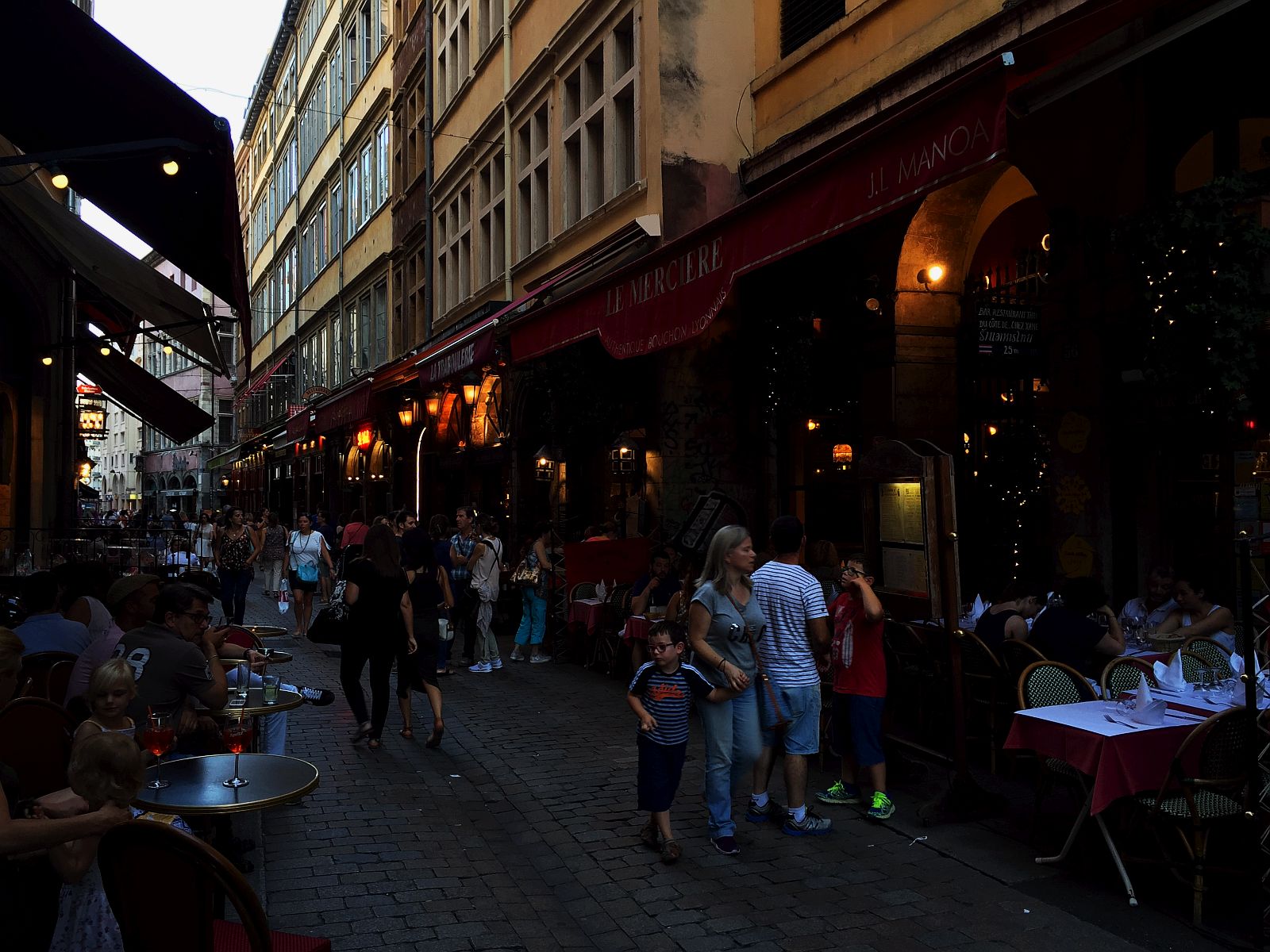
Our last port of call on the trip was Lyon, France’s third-largest city, and the country’s unofficial gastronomical capital (Lyon is the birthplace of famed chef Paul Bocuse). Lyon is also where the Rhône meets the Saône after emerging from high up in the Alpine mountains to the east, then effectively doubling in size and turning south toward the Mediterranean in the center of the city.
We docked next to the University of Lyon, a central spot just south of the ornate Pont de l’Université, which you can cross to get to the 1st and 2nd Arrondissements, then over the Saône and into Vieux Lyon, the district that can date its history back to the Renaissance Era.
Walking along the narrow cobblestone Rue Saint-Jean today, you will mostly see small cafes, English-style pubs, restaurants and few dozen or so ice cream shops catering to the masses of visitors that descend upon the city during the summer months and the city’s large University population. But, if you look hard enough, and you are with the right guides, you can try a few doors along the street and enter into public courtyards surrounded by homes that date back to the 16th Century. You can still see the small fountains where water would be gathered, and you can gaze up at the balconies overlooking the courtyards.
Lyon was also known during the German occupation as the “Capital of the Resistance,” and the many narrow passageways, secret entrance ways and above-ground walkways in the Vieux Lyon were perfect for Resistance fighters to escape capture from their occupiers.
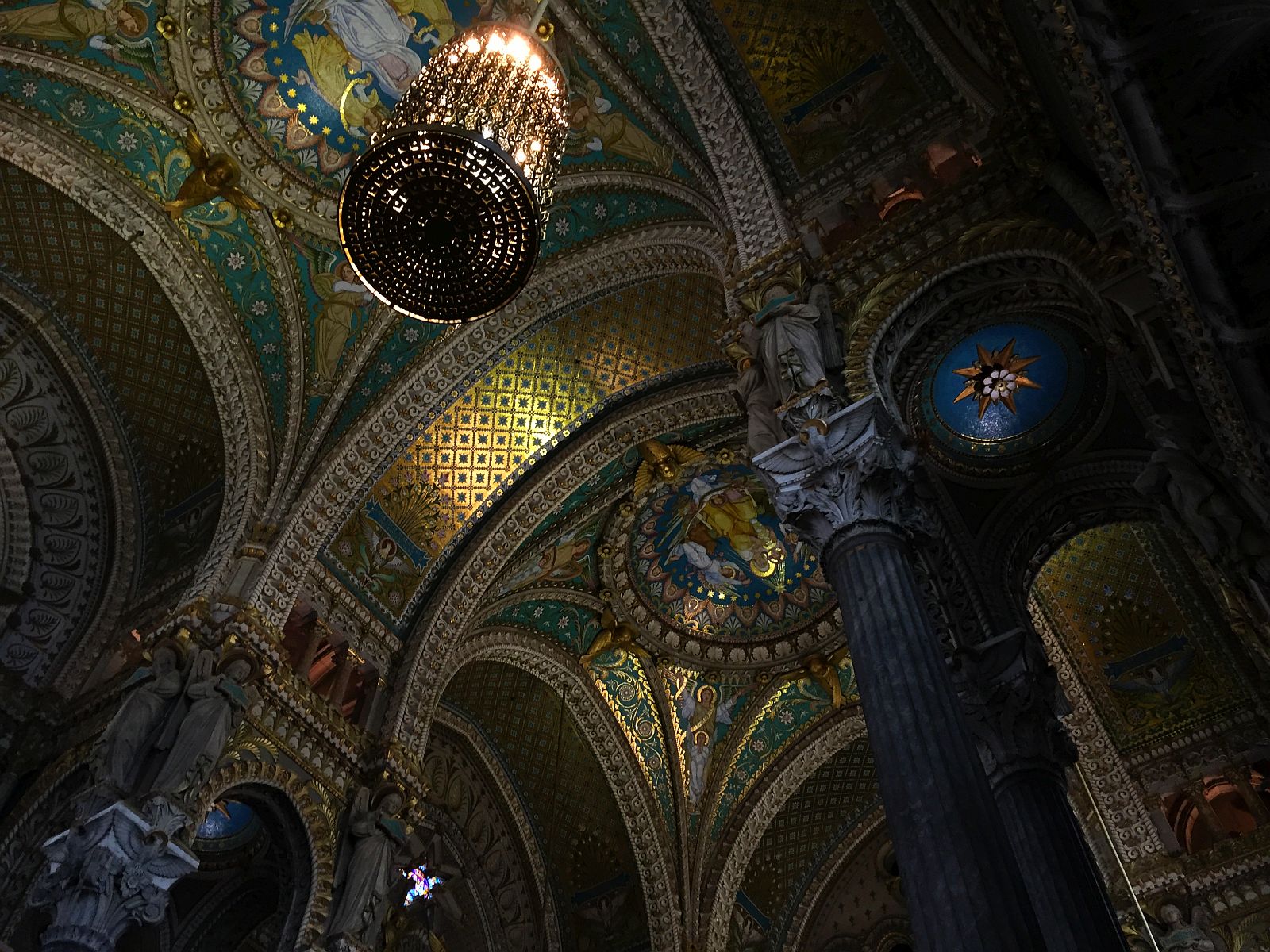
Towering above the district is Fourvière hill, where the city’s most famous basilica, La Basilique Notre Dame de Fourvière, sits above the city and provides the best panoramic views of Lyon.
After a morning of exploring, we set out for the nearby village of Perouges, affectionately known as one of the most beautiful villages in Europe. Located a short 45-minute drive from Lyon, Perouges is a preserved hilltop Medieval village that can date its origin back to the 12th Century.
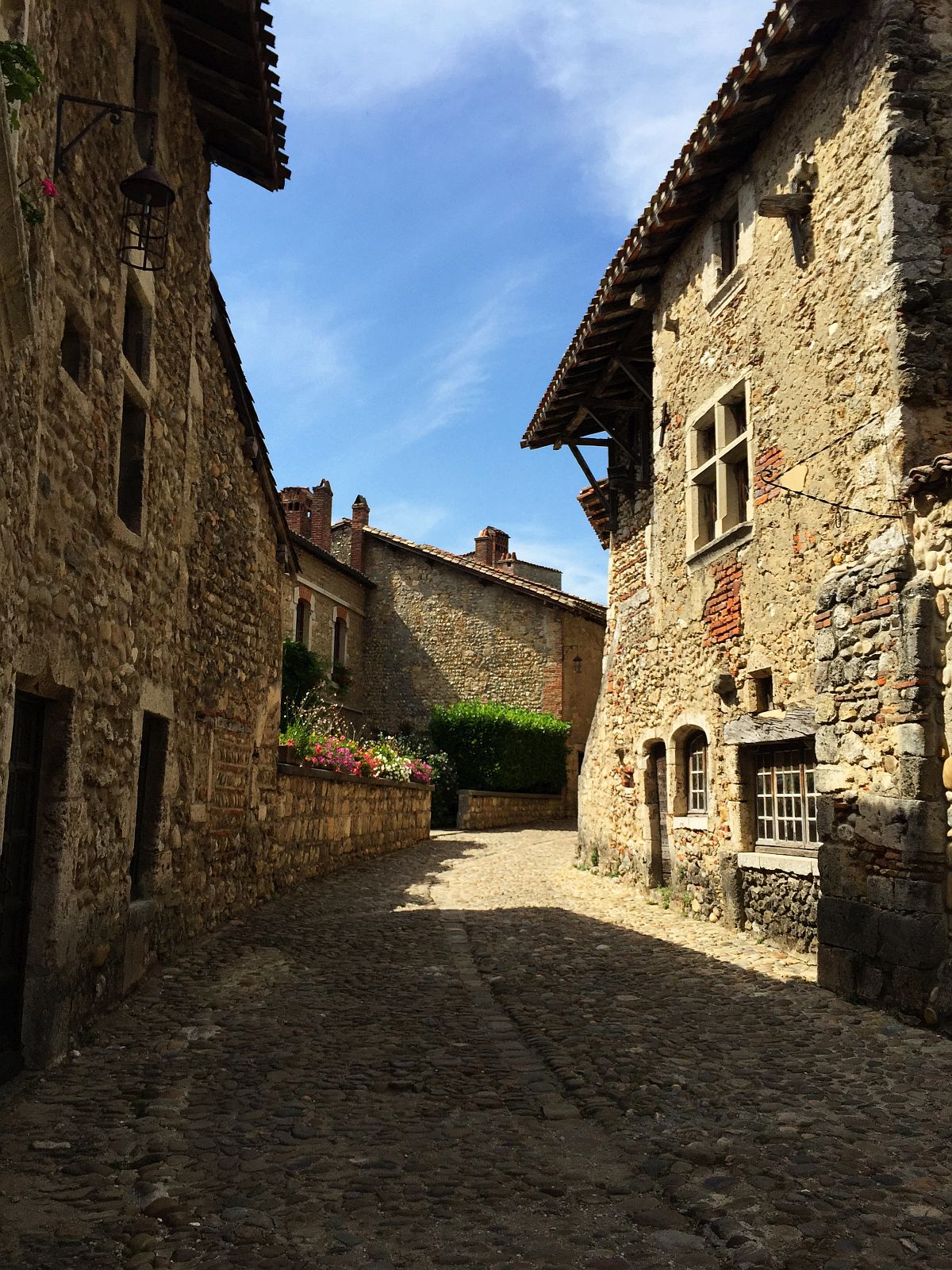
As soon as you walk past the stone walls that had protected the village for centuries, you are transported back into time. The village’s thousand or so inhabitants are required to maintain the stone facades of their homes and shops, and you are free to wander along the circular cobblestones streets, stopping into the many craft shops and restaurants that welcome visitors throughout the year. The image of small Peugots that come slowly rumbling down the street is a jarring contrast to your surroundings, but is a nice reminder of how France has worked hard to balance its history with the needs of contemporary life.
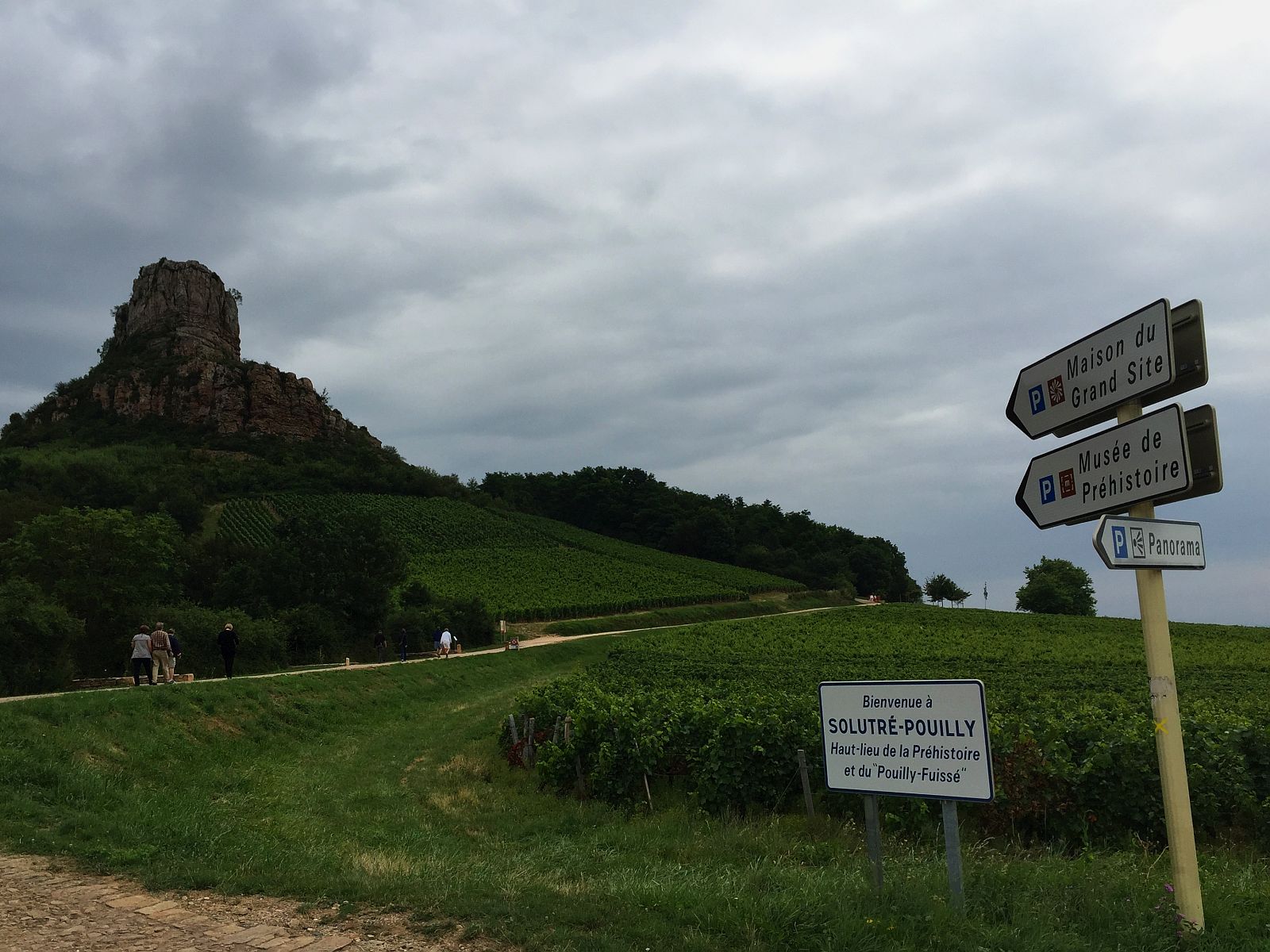
On our final day of the cruise, our last excursion was north to the famed Beaujolais and Burgundy wine regions. As our bus climbed north of the city and along the Saône, we were greeted by miles and miles of Gamay vineyards, a purple-colored grape that produces a light-bodied, fruity wine, and which were destined to make it to some of the world’s most coveted bottles.
The region is filled with countless small village dedicated to the centuries-old history of wine-making, and a drive through the area can easily conjure up images of dropping everything and starting your own winery, a tradition that has been the root of draining more retirement accounts throughout the years than probably any other activity.
Of course, when there’s wine there’s great food, and our final visits of the day were to a local truffle and goat farm. First we pulled up to Le Cos-Piguet, where a spirited and well-trained canine truffle hunter, Chinook, and his owner, Olivier Devevre, greeted us then led us up a gentle hill to a fenced-off orchard where the magic happens.
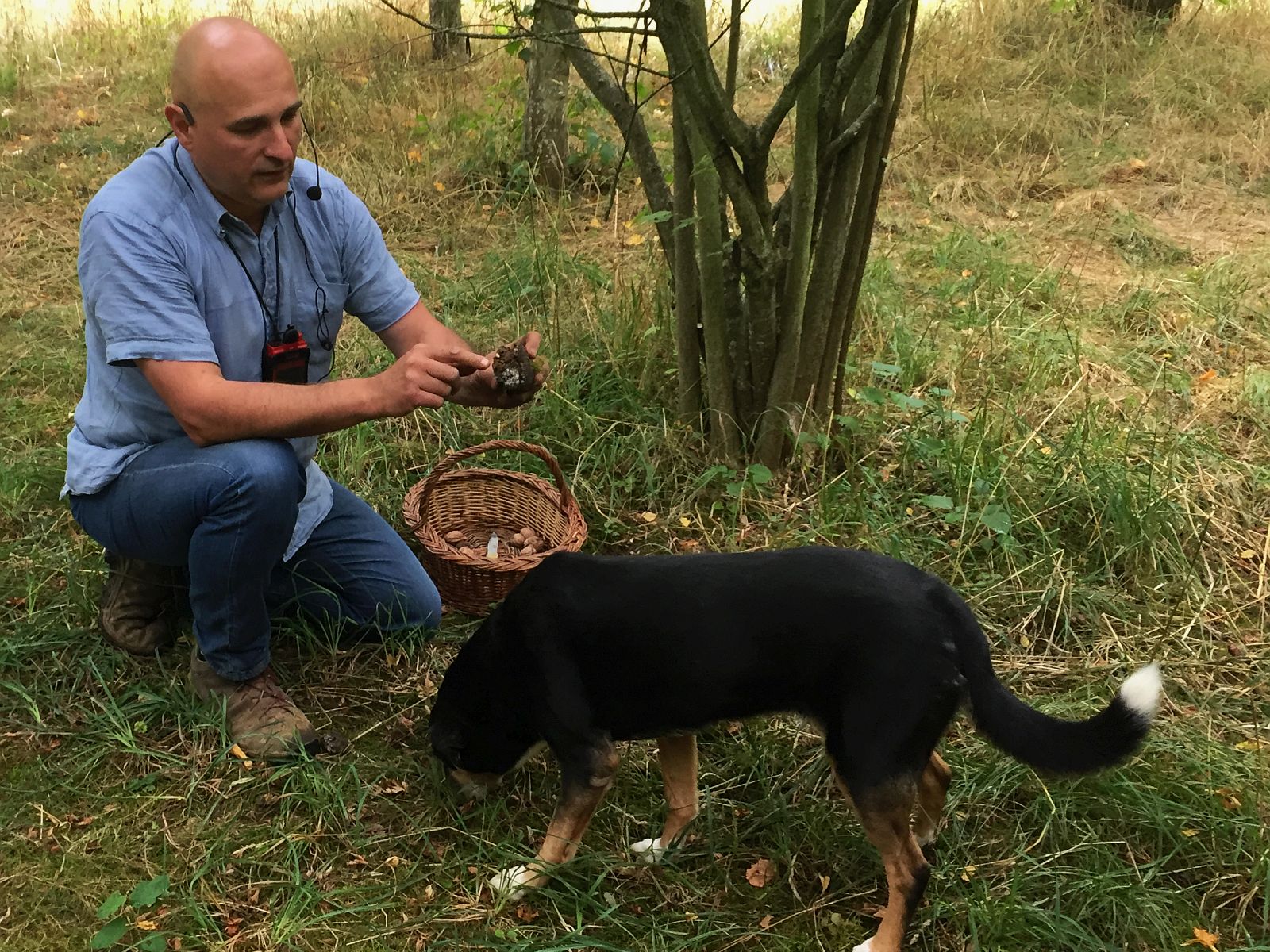
Here a grove of Oak Trees are hosts to truffles that grow in and around the fertile tree’s roots, and are best discovered by the sensitive nose of man’s best friend. Olivier demonstrated us Chinook’s sniffing capabilities by letting him wander around the grounds until he would stop suddenly and began furtively digging for his prize. We were then led inside to their farmhouse to try their homemade truffle-infused butter that we liberally spread on slices of bread.
Finally we traveled to nearby Chevrerie La Trufiere, a goat farm founded by Sylvain Chopin, and which is home to a herd of 150 or so very friendly Alpine goats, a breed known for their ability to produce milk and to make mischief by climbing as high as they can in whatever surroundings they are in at that time (I saw about 5 goats precariously perched on a window sill above the rest of the herd with little indication as to how they made it that high).
After a long visit petting and feeding our new furry friends a mixture of hay and alfalfa, we we were led inside for a tour of their dehumidified refrigeration units where the cheese is aged, and given a taste of the various varieties they create. All of course accompanied by even more wine.
I couldn’t think of a more fitting way to have spent the day. Good food, artisanal cheese, lots and lots of wine, an exploration of traditions that date back generations. Oh to come back one day in a future life as someone who spends their summer days traversing a river through the South of France. Life couldn’t get much better.

/
 Matt Stabile is based in New York City, and is the founder and Editor-in-Chief of The Expeditioner which was founded in 2008. You can read his writings, watch his travel videos or contact him via email at any time at TheExpeditioner.com.
Matt Stabile is based in New York City, and is the founder and Editor-in-Chief of The Expeditioner which was founded in 2008. You can read his writings, watch his travel videos or contact him via email at any time at TheExpeditioner.com.
